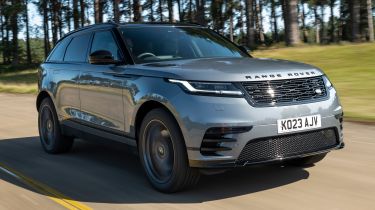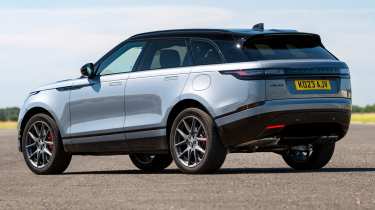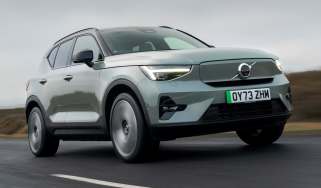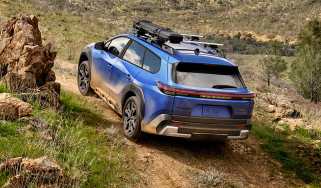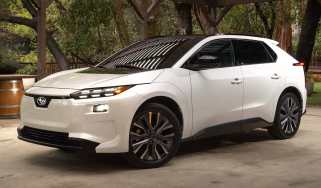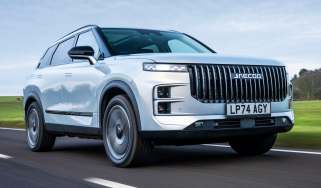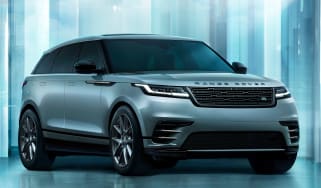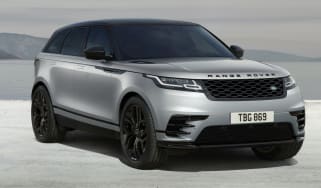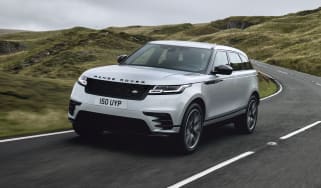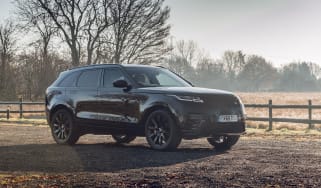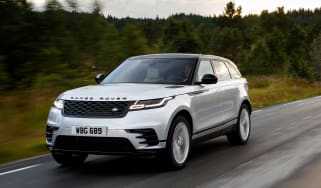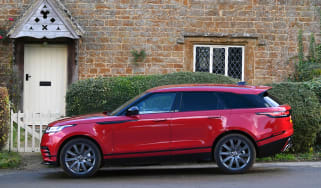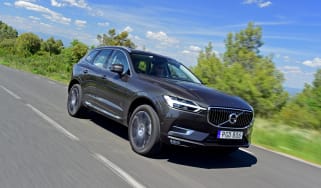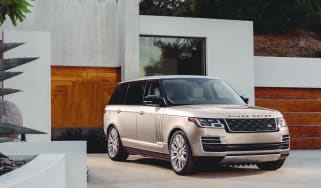Range Rover Velar review – a glamorous and sleek SUV
“The Range Rover Velar is one of the coolest SUVs money can buy, with eye-catching looks and cutting-edge in-car technology”
Pros
- Sharp yet comfortable
- Jaw-dropping interior
- Stunning looks
Cons
- Rear space is tight
- Thirsty petrol engines
- Nice ones are expensive
Verdict - Is the Range Rover Velar a good car?
One of the best-looking modern SUVs, the Range Rover Velar is more than just style over substance. It’s good to drive, feels luxurious inside, and there’s a range of engines that now includes a tax-busting plug-in hybrid. It’s not the most spacious car in its class, however, and prices – especially for flashier trims – are on the high side.
Range Rover Velar models, specs and alternatives
The Range Rover Velar is a mid-range SUV model in the brand’s lineup, sitting below the Range Rover Sport and above the Range Rover Evoque. Named after a seventies prototype of the original Range Rover, the Velar is a sleek, style-led SUV with futuristic looks and a high-end image.
The Range Rover Velar sits in a highly competitive premium SUV market, going up against highly-specced versions of the BMW X3 and the lower end of the Audi Q7 lineup. Arguably, the Velar blows those and other rivals, such as the BMW X4, Lexus RX, Mercedes GLC Coupe and Porsche Macan, out of the water in terms of sheer style and glamour, so it feels very special indeed.
For 2023, the current generation of Velar was given a lightly-tweaked front end, with a new grille and LED headlight signature, plus a revised rear bumper. It’ll take a keen eye to spot the changes, but with an already sleek, cutting-edge design, it’s not like the Velar needed a style-led overhaul.
In addition to those visual changes, parent company Land Rover also fitted its latest Pivi Pro infotainment system, with a single curved screen in the centre of the dash housing everything from the navigation and media functions, to the climate controls and smartphone connectivity. Over-the-air (OTA) updates also feature.
Prices have climbed to almost £55,000 for an entry-level Range Rover Velar S, with the cheapest engine now being the 201bhp mild-hybrid D200 diesel. You can also get this trim with the P250 petrol or P400e plug-in hybrid powertrain. Land Rover also offers more powerful D300 and P400 petrol units on higher-spec models, with all cars featuring a slick eight-speed automatic transmission and all-wheel drive.
Speaking of which, in addition to the basic ‘S’, the Velar now comes in Dynamic SE, Dynamic HSE and flagship Autobiography trims; the thunderous 542bhp SVAutobiography Dynamic car is no longer available.
All versions get at least 19-inch alloy wheels, heated leather seats, a fixed panoramic roof and LED lights. Top-spec cars feature 20-way electrically-adjustable heated and cooled massage seats and a Meridian 3D sound system.
